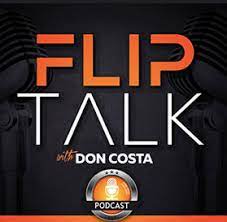CREDIBILITY: ONE OF THE MOST OVERLOOKED ITEMS IN REAL ESTATE
By
Building credibility takes years of work but can easily be lost all in a single moment. In real estate, professionals and investors often find success through their networks. Having connections with the right people and having an equally good reputation encourages others to want to do business with you. Whether you are an agent, mortgage broker, investor, or even just a regular buyer, credibility is a critical backbone of your potential success and is oftentimes overlooked.
article continues after advertisement

In all aspects of life, nobody wants to associate or do business with someone that is not credible. That is why it is most important to maintain a positive reputation and image especially in real estate. The better credibility you have, the more people will want to work with you. There are certain ways you can show credibility with your network or clients in real estate.
Certifications or Credentials

If you are a real estate professional, a certification/credential will demonstrate that you went through the proper channels to earn an education in the field that you are involved in. It demonstrates that you have the know-how and knowledge to properly guide your clients in the right direction. In addition, it can provide additional peace of mind for buyers as they know they are dealing with a highly educated and certified professional.
Maintain A Positive Track Record

For both real estate professionals and investors, showing a consistent and positive track record demonstrates that you have a track record for success and have proven credibility that you know what you are doing. This is important whether a real estate professional is working with clients and can provide referrals/history of past transactions or even for investors who need to raise money and demonstrate that they have a history of securing good deals that benefit all involved.
Stay Honest and Trustworthy
Nothing can destroy credibility more than dishonesty and breaking trust. It can take years to build credibility, but it can come crashing down with one poor judgment call. This is not a difficult competency to follow. Stay true to yourself, your clients, and your partners and you are guaranteed to maintain a strong credibility. You want to be the person that everyone can count on. It’s a simple best practice that pays dividends towards your network and your overall business.
article continues after advertisement

Leverage Social Media
Your social media pages can be your biggest asset or your worst enemy. These days, anything on the internet can be found. If you are operating in real estate, you’ll want to update your social media to look professional and presentable across all platforms. Anyone you are looking to do business with can simply google your name and all your social media pages come up. Depending how you utilize this asset, it can either help boost your credibility or hurt you in the long run.
Overall, credibility is important in real estate and without it, you’ll find yourself having a harder time closing deals and generating success. By following these simple best practices on establishing credibility, you too can improve your real estate network and success.


Joe Arias and his partners have flipped hundreds of properties in the Southern California Region. He has developed cutting-edge systems to simplify and scale the entire remodel process that can easily be applied to flipping, rentals, wholesaling, and other passive income strategies. More recently, Joe founded a real estate investing education company called RealSuccess Investments, allowing him to share his tools and systems with hundreds of up-and-coming investors.
RealSuccess is focused on education on flipping, rentals, passive income, and wholesaling.
Joe is also a best-selling author. He has written 4 books: Finding your RealSuccess, First Steps to Flipping, R stands for Rentals and Retirement, and Wholesaling Real Estate.
“I came from Argentina when I was 20, I am 40 years old now. I didn’t know anyone, I am CERO generation, usually people say, I am first or second generation but I was the one that crossed the border, no language, no friends, no family, no money, nothing, nada… If I can do it, anyone can.”
From a young latino immigrant to a celebrated real estate investor, Joe is a true testament to hard work and discipline. As an investor, he has made it his mission to help others achieve financial freedom while enjoying living a life of passion, fulfillment, and empowerment.
RealSuccess Website
Personal Instagram:
https://www.instagram.com/joeariasinvestor/
Real Estate Investment- Instagram:
Instagram: https://www.instagram.com/realsuccesseducation/
Video For Finding Money from All Day Training (10 Hour Seminar)
https://vimeo.com/manage/videos/528446162
1 Hour Webinar
https://vimeo.com/manage/videos/530996751
Amazon Book#1:
Amazon Book#2
Learn live and in real-time with Realty411. Be sure to register for our next virtual and in-person events. For all the details, please visit Realty411Expo.com or our Eventbrite landing page, CLICK HERE.


















































